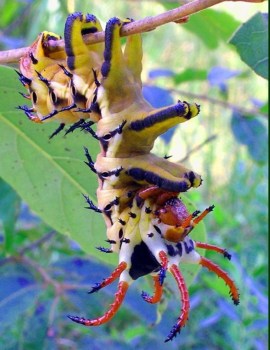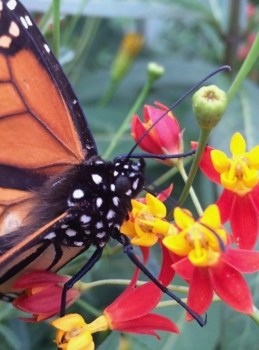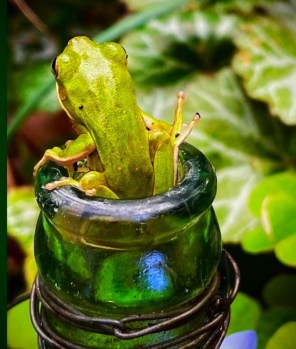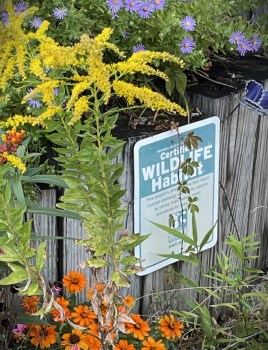The Realities of an Urban Wildlife Sanctuary
Published 11:45 am Wednesday, November 13, 2024
Having an urban oasis for wildlife and native plants isn’t always a cakewalk. Along with butterflies and beautiful wildflowers, there are quite naturally some other residents and visitors to contend with.
I have a National Wildlife Federation placard down by the street, a public proclamation that my garden is an official Urban Wildlife Sanctuary. It’s a social signal telling neighbors and city inspectors that my mess is on purpose, so cut it some slack. All I did to get it was go to their online site and fill out a form saying my garden includes food, shelter, and water for whatever critters need them.
An urban wildlife or native plant garden doesn’t have to look messy, of course, or even naturalistic. Any regular landscape can have those features with just a few native trees, shrubs with berries, a flower bed with something in bloom all year, and a bird bath to keep critters hydrated. Easy-peasy.
For a richer diversity of wildlife, it helps to have a small swath of somewhat unruly wildflowers and grasses which can be made attractive with a sculpture, section of split rail fence, or other accent. Even better, find a place where you can pile logs for beetles and lizards, and where native pollinator bees can drill nest holes. If at all possible, leave a “snag” – a standing dead tree – out back as a high-rise condo for the dozen or so birds, including woodpeckers, owls, tufted titmice, chickadees, and nuthatches, that live in cavities and feed on the grubs, spiders, and other critters that share the wood.
Sounds idyllic, but I won’t sugar coat this for dilettantes – if you do these things, expect creatures not all to your personal liking. After fifteen years my partner Susan, who is from a village near Liverpool in Lancashire, England, has finally gotten used to most of it. Hummingbirds still startle her, but she is fascinated by the many different dragonflies and butterflies with their sometimes-bizarre caterpillars, the possums and raccoons ambling across the porch at night, the screeching owls, swooping bats, screeching owls, and various lizards, singing tree frogs, slug-eating wolf snails, and other oddities which calmly clamber around.
Susan doesn’t mind having cicadas, June bugs, giant crane flies, and chirping geckos (which have eaten all the roaches for miles around) hanging around our porch light, or uncovering small centipedes, roly-poly sowbugs, and nearly footlong earthworms while sifting compost.
She thinks she has sweet-talked the green anole lizards into being her friends, and steps nimbly around the thumb-size yellow-and-black garden and huge golden orb spiders that stretch webs across the flagstone walks every night. She knows how to drop big leaf-footed stink bugs into a bucket of soapy water, and where I leave out-of-the-way wasp nests in peace.
But it’s the snakes that rile her, an atavistic reaction she just can’t help. We have “just” three nonvenomous kinds: Pencil-size brown earth snakes that are physically unable to bite but eat slugs; striped ribbon snakes that glide beneath shrubs around the edge of our compost pile; and one large, speckled king snake, shiny black flecked with a galaxy of pale-yellow spots, that patrols for rodents and other less welcome snakes.
All three snakes are distinctive, very beneficial, and rarely ever seen, but knowing they are there is petrifying enough for her to carry a small stick as we garden together.
So yeah, a wildlife/pollinator/native plant garden is a great place to live, for most. But some folks don’t understand what a wildlife habitat placard indicates is a commitment beyond pretty flowers and butterflies. It’s a commitment.
Felder Rushing is a Mississippi author, columnist, and host of the “Gestalt Gardener” on MPB Think Radio. Email gardening questions to rushingfelder@yahoo.com.








